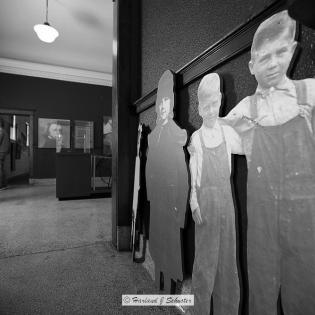Was the Orphan Train Philanthropic?
Students examine the intent and reality of the orphan train and discuss whether it was an effective solution to child homelessness. They write and speak about the traits of someone who takes action for others and civil society.
The learner will:
- describe the traits of someone who takes action for the common good, a philanthropist.
- recognize when citizens' rights are being denied.
- several copies of four different articles taken from the Internet concerning riders of the Orphan Train, one for each student in class (See Bibliography from Lesson One: Traveling on the Orphan Train).
- chart paper and markers
- student copies of handouts: Core Democratic Values and Question Sheet
- copies of "A History of the Orphan Trains" by Connie Di Pasquale: kancoll.org/articles/orphans/or_hist.htm
- online article about Charles Loring Brace: socialwelfarehistory.com/people/brace-charles-loring/
This lesson lends itself to discussions at home on the rights of homeless people in American society today. An interview sheet could be sent home with students to be filled out with parents concerning the Orphan Trains or homelessness.
The Kansas Collection Web site: kancoll.org/articles/orphans/index.html
Panagopoulos, Janie Lynn. A Faraway Home: an Orphan Train Story. EDCO, 2006. ISBN0974941263
Instructions
Anticipatory Set:
You are a rider on the Orphan Train. Write a short diary entry to a friend back in New York City telling how you feeel while riding the train. What kind of home do you hope to be placed in?
Randomly distribute the four different printed articles about the Orphan Train. Have students find the other students who have the same article. This will be their group. Hand out the Question Sheet to each student.
The groups are to read their articles to determine whether or not the Orphan Train benefited children or denied them their rights. Post a list of Core Democratic Values to assist with the discussion. They can discuss evidence of benefits and negative traits of the Orphan Train system and practices and how it affected children.
Each group makes a poster detailing their evidence and decision about whether it benefited children or denied their rights.
Display the posters around the room and give students sticky notes to do a gallery walk. They can add notes to the posters in answer to questions: Were these children treated fairly? Was this a better life? How could they have done it better? What rights were violated? Allow about 10 minutes for this gallery walk.
As a whole class, discuss what they noticed in the posters and from the articles. Discuss whether the Orphan Train was an act of that helped the common good. Define philanthropy as giving time, talent, or treasure, and taking action for the common good. An example of philanthropy today is donating to or volunteering at a soup kitchen, which is a generous sharing of time and treasure to help people in the community have a better life.
Day Two
Discuss the meaning of philanthropy and philanthropist. Talk about whether a philanthropist could cause harm with their generous actions. Could someone mean well and still do something that doesn't help society?
Explain that it will be students’ job to determine whether or not Charles Loring Brace, founder of the Orphan Train, was a philanthropist. Remember that a philanthropist gives his/her time, treasure or talent to benefit the common good.
Hand out the reading, "A History of the Orphan Trains." Allow 10-15 minutes to read the article with their partner, making notes and annotating.
While partners are reading, hand out the profile sheets on Brace that they’ll fill out when they’ve finished. They should determine whether or not Brace fits the criteria to be a philanthropist. Have the partners combine with another group to report their findings. Identify and explain how core democratic values relate to philanthropic activities.
Exit assessment: Finish this sentence starter: "I would (would not) classify Charles Loring Brace as a philanthropist because…" The paragraph should include: (1) part of the definition of philanthropy and (2) supporting details which describe the characteristics of someone who helps the community.
The students may research local philanthropists and make a scrapbook to be donated to the school library, a local civic organization, or a local library. They could also invite these local philanthropists to a celebration luncheon to honor their contributions.
Handouts
Philanthropy Framework
-
Strand PHIL.II Philanthropy and Civil Society
-
Standard PCS 01. Self, citizenship, and society
-
Benchmark MS.4 Describe the characteristics of someone who helps others.
-
-
-
Strand PHIL.III Philanthropy and the Individual
-
Standard PI 01. Reasons for Individual Philanthropy
-
Benchmark MS.6 Identify and explain how fundamental democratic principles relate to philanthropic activities.
-
-
